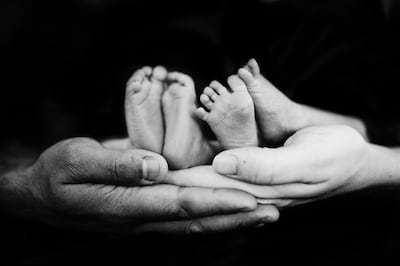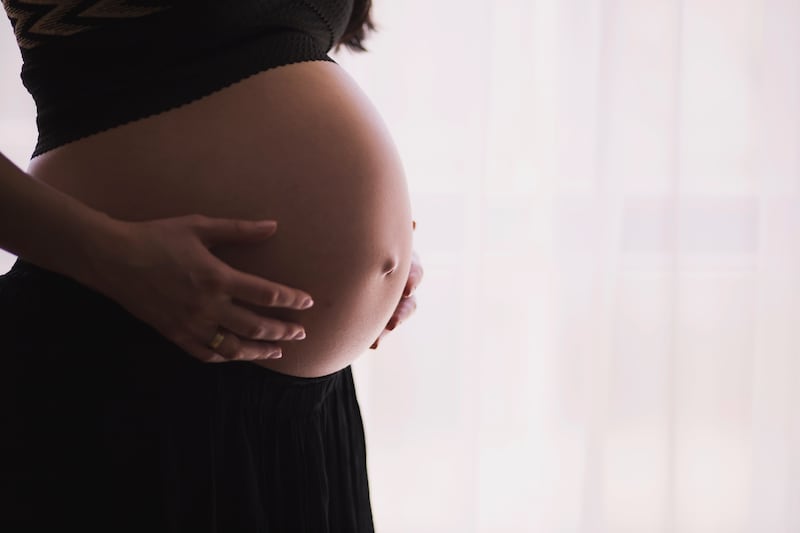The news that Cristiano Ronaldo and his partner, Georgina Rodriguez, suffered the loss of one of their twins has shed tragic light on the risks that can stem from a multiple pregnancy.
Sharing the news in an Instagram post, the Manchester United player and Rodriguez received an outpouring of support and well-wishes when they revealed: “It is with deepest sadness we have to announce that our baby boy has passed away. It is the greatest pain that any parents can feel. Only the birth of our baby girl gives us the strength to live this moment with some hope and happiness.”
While all pregnancies carry a certain amount of risk, a multiple pregnancy has additional potential for complications.
What are the risks with a multiple pregnancy?

“A pregnancy with twins, triplets or a higher number of babies is considered as high risk from the onset,” says Dr Zofia Godron Sonmez, obstetrician and gynaecologist at Medcare Women and Children Hospital. “Multiple pregnancies exhibit complications at a greater frequency than in a single pregnancy, for example iron deficiency, pre-eclampsia, diabetes, Caesarean delivery, growth restriction or haemorrhage.
“There is a six times increased rate of preterm delivery, five times higher rate of loss of baby before or during delivery, and seven times increased rate in neonatal death, mainly due to prematurity,” says Sonmez.
The most common complications of a multiple pregnancy include going into premature labour and gestational hypertension (high blood pressure). If left untreated, high blood pressure can develop into pre-eclampsia, a condition that causes swelling, headaches and rapid weight gain. It can lead to eclampsia, which can be fatal.
In severe cases, blood pressure medications can stabilise the mother, but the only cure is delivering the baby as quickly as possible. Careful monitoring and medication are also required to ensure a healthy delivery.
Premature labour can mean low birth weight and underdeveloped organs, which can cause breathing problems and may require the use of a ventilator.
There may also be issues with the stomach, intestinal tract and nervous system.
Low birth weight can also result in feeding problems, such as a difficulty latching on to breastfeed.
What might cause a twin to die intrauterine?

There are different reasons why a baby in a multiple birth may die in the womb. Pre-eclampsia is not only a common complication, but also the main cause of loss in pregnancy, and usually appears after 20 weeks gestation, affecting women with previously normal blood pressure.
Sonmez says: “The loss of one twin poses a greater risk of demise of the remaining twin, and a higher likelihood of maternal complication and mortality. Clotting disorders in the mother are a significant maternal threat if the pregnancy continues. Excessive and abnormal clotting can be triggered after the death of one twin and is caused by the presence of the deceased twin and its placenta.
“The decision about the timing of a delivery of the second twin must balance potential risks of foetal death and possible maternal complications versus risks related to immaturity, and this stands as a great challenge. With the proper medical care and surveillance, the likelihood of the pregnancy to be continued with one living twin is higher and therefore, there is a chance to decrease prematurity-related conditions.”
Growth restriction is another complication that can lead to loss, as is Twin-to-Twin Transfusion Syndrome (TTTS) a rare development that occurs when twins share one placenta and a network of blood vessels that supply oxygen and essential nutrients for development. It results in one twin taking more blood flow from the placenta.
Cord entanglement is another risk.
Twin pregnancies are also at a higher risk of stillbirths compared to single pregnancies. The risk is increased if the babies share a placenta. The risk of stillbirth increases as the pregnancy advances, so mothers carrying twins may often be advised to deliver earlier than usual.
What happens when a twin dies in the womb?
“The medical term for the death of a twin in the womb is single foetal demise. Some of the causes of intrauterine death in twins are genetic factors, congenital defects or a wide range of placental abnormalities,” says Sonmez.
If a twin dies early on in the pregnancy in the first trimester, it can often be without the mother or doctor knowing. Medical experts call this the Vanishing Twin Syndrome (VTS). The embryo is usually entirely or partially absorbed into the mother’s body. Before ultrasounds, doctors would often find evidence of a vanishing twin in the placenta after it was delivered.
If a twin dies in the second or third trimester, there are significant risks to both the mother and the remaining baby. These include a heightened risk of cerebral palsy in the surviving twin, as well as that of intrauterine growth restriction, whereby the remaining baby does not grow as expected.
For the mother, there is a high possibility of infection, haemorrhaging or going into early labour. Doctors assessing the risk would want to deliver the surviving twin as quickly as possible in this outcome.
“At the early stage, a single-twin death usually does not cause any further complications,” says Sonmez. “The twin is not detectable on an ultrasound scan in the second trimester, and therefore it is called the ‘vanishing twin’.
“The risk to the mother and the remaining twin when one twin passes away in second and third trimester depends on whether it is an identical or non-identical twin pregnancy, and the cause of the demise and stage of the pregnancy.”
How to reduce risk in a multiple pregnancy

Eliminating all risk in any pregnancy is impossible, but additional precautions can be taken.
Regular check-ups are essential. Women carrying more than one baby require more check-ups than a single pregnancy. Maintaining a good diet and hydration, as well as taking prenatal vitamins as directed by your doctor are vital. Some expectant mums are asked to reduce their frequency and level of exercise.
Although anxiety may be heightened, it is important not to self-diagnose, such as putting yourself on bed rest, as this can carry its own complications if it’s not medically necessary.
Expectant mothers are also urged to listen to their bodies and be aware of the signs of premature labour, which can include dull lower back pain, the appearance of bight red blood and pelvic pressure.
“It is important to stay under medical surveillance so that any complication can be managed at an early stage,” says Sonmez. “Some of the risk factors can be minimised though a proper diet and supplementation, which can help with iron deficiency. Following medical advice reduces the risk of complications related to certain conditions such as hypertension or diabetes.”






